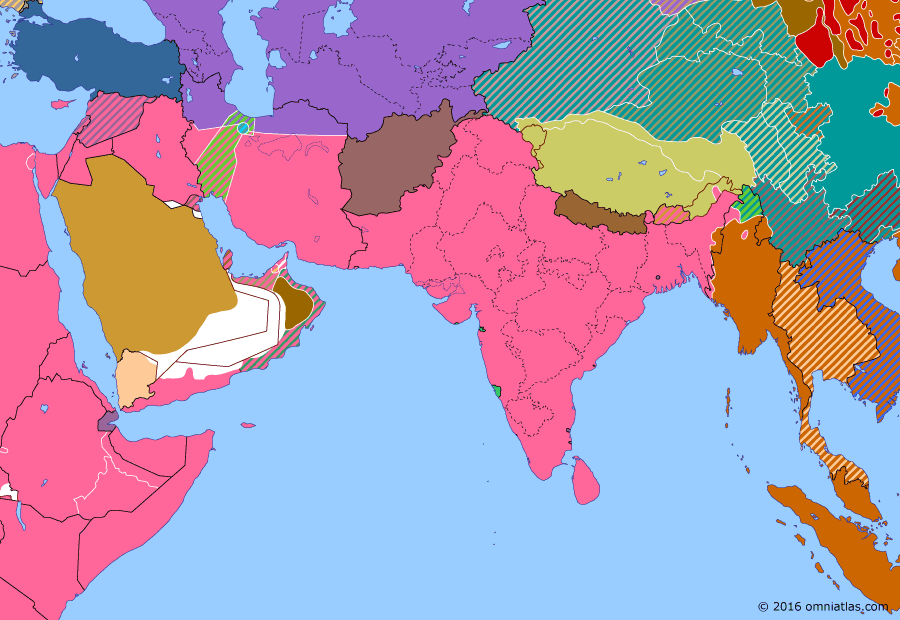Southern Asia 1944: Battle of Imphal-Kohima

15 April 1944
15 Apr 1944
World War II: The South-East Asian Theater
1880–1914 Pax Britannica
1914–1917 Great War in the Middle East
1917–1918 Fall of the Ottoman Empire
1918–1923 Anglo-French Overreach
1923–1934 Rising Nationalism
1934–1940 Arrival of the New Order
1940–1941 World War II: The Middle Eastern Theater
1941–1945 World War II: The South-East Asian Theater
1945–pres Independence
Battle of Imphal-Kohima
10 Dec 1941 Japanese invasion of Thailand and Malaya
15 Feb 1942 Fall of Singapore
5 Apr 1942 Indian Ocean Raid
6 Oct 1942 Quit India Movement
25 Mar 1943 Arakan, Chindits, and Bengal Famine
15 Apr 1944 Battle of Imphal-Kohima
20 Feb 1945 Operation Extended Capital
2 Aug 1945 Reconquest of Burma
12 Sep 1945 Japanese Surrender in South-East Asia
By the close of 1943 the British were ready for a new offensive against the Japanese in Burma, mounting a second round of Arakan and Chindit offensives, this time in conjunction with the Americans and Chinese. The Japanese countered by invading India in an attempt to knock out the British communications base at Imphal, but were repelled after several months fighting.